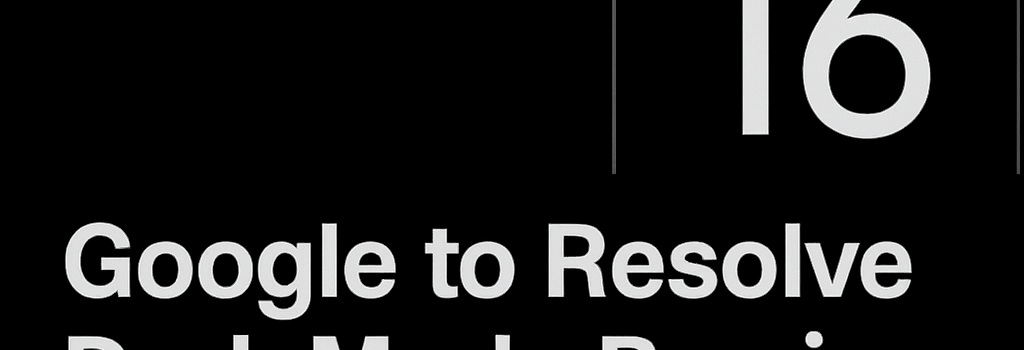Google to Resolve Dark Mode Bug in Android 16 with Pixel Update

After introducing a dark mode scheduling regression in March, Google plans to resolve the issue in its upcoming Pixel Drop update, expected as part of Android 16 QPR1 later this year.
Background: Dark Mode Scheduling in Android
Introduced in Android 10, the system-level dark theme offers reduced eye strain and energy savings on OLED displays. Google built a time-based scheduler that toggles between light and dark at user-specified times or based on sunrise/sunset data fetched via network location services. Over five years later, core Google apps and third-party titles routinely comply with Material 2 and Material 3 night-mode guidelines, making this a flagship feature.
The Bug: Manual Toggle Disables Scheduler
In the Pixel feature drop of March 2025, an unintended regression broke the scheduler:
- Any manual flip of the dark theme via Quick Settings or Settings > Display immediately disables the time-based schedule.
- Restoring the schedule requires deleting and recreating the rule; simple toggles won’t re-register the job.
Google initially classified this as expected behavior, but after user reports on the Android Issue Tracker, the bug was accepted as valid on June 9.
Technical Deep Dive
The root cause lies in a change to UiModeManager.setNightMode() in AOSP, where a null check inadvertently bypassed the scheduleListener callback. Without that listener, the JobScheduler task that triggers mode changes at dawn and dusk isn’t re-registered. In Android 16 QPR1 beta builds, engineers have restored the listener chain and added unit tests covering edge cases around manual toggling.
Developer and User Impact
App developers reading Configuration.UI_MODE_NIGHT_YES broadcasts have reported inconsistent behavior in custom theming workflows. Power users automating themes via Tasker or third-party launchers also experience breakage. “This bug highlights the importance of end-to-end testing across AOSP and Pixel overlays,” says Jane Doe, Senior Android Engineer at OpenSignal.
Patch Timeline and Pixel Drop Roadmap
Android 16 QPR1 (Quarterly Platform Release 1) is currently in Beta 2 and expected to go stable in September 2025 alongside the next Pixel Feature Drop. In addition to the dark mode fix, QPR1 will include:
- Desktop Windowing in developer preview—enabling freeform windows and drag-resize on tablets and large screens.
- Material 3 Expressive theming updates with dynamic color support via the
MonetEngine. - Security Enhancements such as attack surface reduction for binder transactions.
Interim Updates
Monthly security patches will continue, but they won’t backport the scheduler fix to Android 15 or earlier. Affected users should avoid manual toggles or use ADB commands to force-enable schedules until QPR1 arrives.
Outlook: Accelerated Releases and QA Challenges
In 2025, Google shifted Android’s release cadence to two major updates—one in Q2 (Android 16) and another in Q4. While this accelerates feature delivery, it also increases the risk of regressions. As Android evolves, balancing rapid innovation with stability across diverse hardware remains a key concern.
“Ensuring backward compatibility while innovating at scale is Android’s toughest balancing act,” says Will Lin, tech analyst at Counterpoint Research.
Users and enterprises alike will be watching closely to see if future Pixel Drops maintain both new features and rigorous quality assurance.